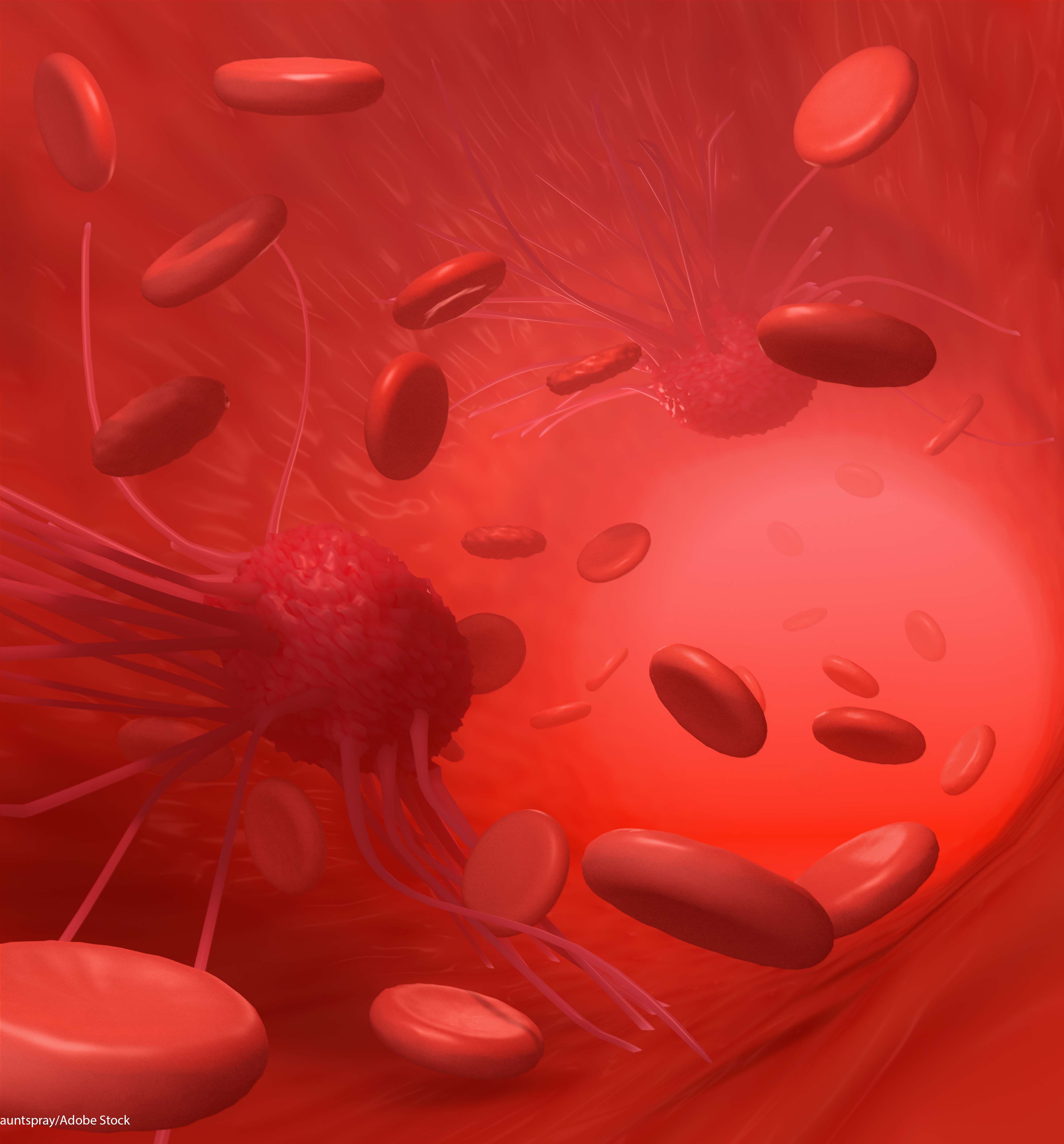FDA Grants FTD to Novel Cancer Vaccine in Low Tumor Burden Follicular Lymphoma
The EO2463 off-the-shelf immunotherapy achieved an overall response rate of 46% in patients with follicular lymphoma considered to be in the “watch-and-wait” setting.
The EO2463 off-the-shelf immunotherapy achieved an overall response rate of 46% in patients with follicular lymphoma considered to be in the “watch-and-wait” setting.

The FDA has granted fast track designation to EO2463, an off-the-shelf OncoMimics™ active immunotherapy vaccine, for patients with follicular lymphoma in the low tumor burden “watch-and-wait” setting, according to a press release from the developer, Enterome.1
EO2463 combines 4 synthetic peptides that correspond to CD8 HLA-A2 epitopes that exhibit molecular mimicry with CD20, CD22, CD37, and CD268, the B lymphocyte-specific lineage markers; it also utilizes the CD4+ epitope helper peptide universal cancer peptide 2. OncoMimics™ are bacteria-derived peptide antigens that mimic tumor-associated antigens or lineage markers.
The FDA’s decision came after EO2463 monotherapy exhibited marked efficacy in this patient population in the ongoing phase 1/2 SIDNEY trial (NCT04669171), which evaluated the preliminary efficacy, safety, and tolerability of the agent alone and in combination with lenalidomide and/or rituximab in patients with indolent non-Hodgkin lymphoma.These results were shared in a poster at the 66th American Society of Hematology Annual Meeting and Conference in 2024.2
With a median follow-up of 30 weeks (range, 19-44), and most patients remaining on study treatment, the objective response rate with EO2463 monotherapy was 46% in the first 13 patients with newly diagnosed follicular lymphoma, with 15% achieving complete responses, 31% achieving partial responses, 31% having stable disease, and 23% having indeterminate responses.
“The FDA’s decision is an important validation of the unique potential of Enterome’s OncoMimics™ program,” stated Pierre Belichard, chief executive officer of Enterome, in the press release. “It will expedite the clinical development and the regulatory pathways for EO2463, which is ready to enter registrational testing as early as next year after this fast track designation and a recent positive type-C meeting with the FDA.”
The phase 1/2 SIDNEY trial broadly enrolled patients 18 years or older who were HLA-A2 positive and had radiologically measurable disease with a lymph node or tumor mass greater than or equal to 1.5 cm in at least 1 dimension.3 In cohort 2, patients had newly diagnosed, previously untreated, biopsy-proven grade 1, 2, or 3A follicular lymphoma or marginal zone lymphoma, an ECOG performance status of 0 or 1, low tumor burden per Groupe d'Etude des Lymphomes Folliculaires criteria, and were not in need of standard of care therapy per physician assessment.
In cohort 2, 15 patients with previously untreated follicular lymphoma were enrolled. The median age of patients was 60.0 years (IQR, 50.0-66.0), 60% were male, 100% were White, 93% had an ECOG performance status of 0, and 87% had Ann Arbor stage III and IV disease. The median time since primary diagnosis was 5.5 months (IQR, 3.1-18.2).
The primary end points of the trial were the recommended phase 2 dose and the ORR. Secondary end points included safety and tolerability, immunogenicity, duration of response, and overall survival.
Regarding safety, the most common related adverse effects (AEs) were local administration site reactions, such as erythema, induration, pruritus, and pain in 13 of 15 patients. Patients also experienced grades 1 and 2 fatigue (n = 2), grade 1 headache (n = 2), and grade 1 and 2 myalgia (n = 2); the only grade 3 event related to EO2463 was asthenia.
Infections were observed in 7 patients, for a total of 13 events; 5 of which were grade 1, and 8 of which were grade 2. Grade 2 herpes zoster was the only related AE.
The investigators noted that EO2463 is ready for phase 3 testing.
References
- Enterome receives FDA fast track designation in follicular lymphoma for lead OncoMimics™ immunotherapy EO2463. News release. Enterome. October 16, 2025. Accessed October 16, 2025. https://tinyurl.com/bdhczabj
- Villasboas JC, Smith SD, Wallace DS, et al. EO2463 peptide immunotherapy in patients with newly diagnosed asymptomatic follicular lymphoma results in monotherapy objective clinical responses linked with anti-peptide specific CD8 memory T cell responses: The EONHL1-20/SIDNEY study. Blood. 2024;144(suupl 1):4395. doi:10.1182/blood-2024-201269
- A novel vaccine (EO2463) as monotherapy and in combination, for treatment of patients with indolent non-Hodgkin lymphoma (SIDNEY). ClinicalTrials.gov. Updated December 13, 2024. Accessed October 16, 2025. https://tinyurl.com/y2afh775
Highlighting Insights From the Marginal Zone Lymphoma Workshop
Clinicians outline the significance of the MZL Workshop, where a gathering of international experts in the field discussed updates in the disease state.